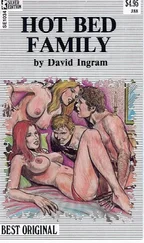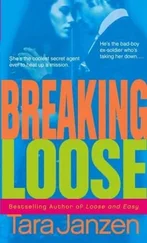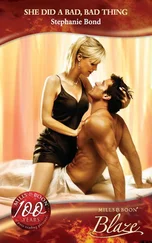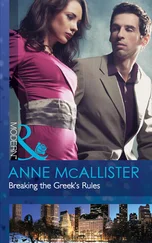The second section, “The Politics of Breaking Bad ” investigates how the popular series represents and intersects with the present-day politics of gender, race and ethnicity, able and disabled bodies, and social class. Brian Faucette maintains that the contemporary struggles and frustrations over American masculinity during a time of great cultural, economic, and social change are embodied in the character of Walter White. Relying on R. W. Connell’s concept of “hegemonic masculinity,” he asserts that Walt, through his transformation into a drug lord and cold-blooded killer, finds freedom from normal domestic obligations and strictures that allow him to attain and recoup a traditional model of masculinity that celebrates aggression, violence, and ruthless behavior. This reclamation of traditional masculinity, albeit by untraditional means, expresses the inner desire of some men to reify what they perceive as having lost in present-day culture.
The politics of race and ethnicity are explored in Andrew Howe’s essay on Breaking Bad ’s heterogeneous representations of Latin American identity. As a border narrative involving the illegal drug trade, many of the show’s villains are Latino. However, there is a wide variability in the portrayal of such characters, from the crazed, drug-addicted Tuco to the suave Chilean businessman Gustavo Fring, and from the axe-wielding Salamanca cousins to their wheelchair-bound uncle, Hector. Despite their villainy, these characters are thus humanized in that they do not conform to typical stereotypes usually on display in American television. Other characters within the series round out the project of broad-based depiction. DEA Agent Steve Gomez is a very nurturing character, not exhibiting any of the machismo typically associated with Latino culture. Interestingly, the macho swagger is supplied by Gomez’s partner, the Caucasian Hank Schrader.
Breaking Bad is, at one level, a show about the politics and consequences of unhealthy and unruly bodies, bodies that are undisciplined and disordered. Indeed, as the series progresses, Jami Anderson points out that each of the main characters has a body that is unruly or unreliable and each struggles to maintain control over his or her body while presenting a public pretense of control. Throughout the early seasons, Skyler certainly regards herself as a good wife and mother, especially when she is accusing Walt of deceitful behavior. Yet on several occasions, she seemingly cannot stop herself from smoking while pregnant. Walter Jr., whose cerebral palsy render his physical impairments most visible, voices the frustrations of a son who cannot understand the disappearance and reappearance of his father in the family home, or the cold war taking place between his parents. The stammering speech of Walter Jr. perfectly expresses the slurred rage of a character that wants to, but cannot, fully understand or take control of the situation he is in. Through its main characters and narratives, the series illustrates that human lives are by nature unruly lives.
“The Style and Reception of Breaking Bad ” is analyzed in the book’s final section. The series’ aural, narrative, and visual stylistics make Breaking Bad a distinctive and even ground-breaking program on cable television. Pierre Barrette and Yves Picard contend that the series distinctive narrative style, which is dominated by non-verbal scenes and rich, stylistic imagery, is part of an emergent second degree style in which images prevail over sound, visuality over orality. The second degree style is demarcated by an enunciative logic wherein meaning is found through the accumulation and dissemination of layers of self-reflexive structures. Breaking Bad is a niche market product with content to provide entertain and a message to the public while the form is designed for the critical few who can discern its complex layers of meanings. One of the notable stylistic and narrative features of the series is its enigmatic teaser segments at the beginning of each episode. The teaser not only functions as an opening but also has significance in itself. Rossend Sanchez Baro asserts that the teaser expresses two of the show’s main characteristics: genre and style hybridization and the representation of the surreal in everyday life. Baro theorizes that Breaking Bad ’s teasers not only serve to disorient and confuse audience expectations at the beginning of each episode, but can be seen as a segment that concentrates and expresses the essence of the episode and indeed the series.
Place as phenomenological and rooted in human experience is a stylistic feature in Breaking Bad . Ensley Guffey examines the use of place in the series as a central element of the show’s narrative demonstrating that the very nature of a human understanding of place allows certain key locations to function as vehicles for character and plot development and integral parts of storytelling in and of themselves. He points out that inanimate spaces are transformed in the series. For seasons one through three, a 1980s era Winnebago becomes a space for revelation, murder, and relationship-building between Walt and Jesse. Whereas in seasons three through four, a red basement filled with stainless steel, industrial equipment becomes the central site of narrative and character contention. Guffey shows that the series’ producers tap into the audience’s shared sense of place as meaningful space in order to create a depth of intentional emotional realism rarely seen in television. An additional distinctive style feature of Breaking Bad is its use of sound, music, and silence. Carlo Nardi analyzes the series’ construction of a distinct soundspace with a particular focus on songs and how they serve metadiegetically to comment on the story. He posits that these metadiegetic songs, by drawing attention to themselves and playing with cinematic conventions, possibly prevent any identification with either the narrative, the characters or both, to engage the audience member in what he calls “complicit identification” with the producer or director’s perspective, therefore appealing primarily to audience members with a strong critical sense.
Instead of being a mere by-product of the narrative, Deidre Pribram maintains that emotions can be understood as a form of narrative action that is as significant and determining as any physical action. Emotions are mobile and circulate within a narrative producing social relations by enabling cultural meanings to be established and exchanged. Relying on these two concepts, Pribram analyzes two narrative sequences from Breaking Bad in order to understand how they function as emotional, dramatic acts conveyed in the narrative, how they concern the circulation and exchange of emotions between characters, and how they serve to establish cultural meanings and emotional significance for audiences.
Because Breaking Bad is a richly textured, television drama, this edited collection can only proffer a critical glimpse into the cultural, economic, and social contexts, representational politics, and aesthetic style of the series. More research is needed on the fictional women of Breaking Bad and with the series’ reception among a diverse array of audiences, along with how AMC engages with these audiences through its website and a variety of industry-produced paratexts, which include blog and talks, interviews, newsletters, episode previews, games, and podcasts. Of course the fan-based and produced paratexts are also fertile textual resources for investigating the range and character of meanings that audiences construct of the series and its characters. Emerging in the depths of the Great Recession (2007-2009) and in a post-welfare, neoliberal state, Breaking Bad expresses many of the social and economic struggles of a middle and working class America where only the ruthless capitalist entrepreneurs, whether legitimate or illegitimate, are handsomely rewarded and the timid often find themselves marginalized or even victimized in a winner-take-all modern society. Walt, in the pilot episode, explains to his students his views about chemistry as the study of change involving complex processes of growth, decay, and change. While he is talking about the subject of chemistry, he could just as well be describing not only his character but the narrative dynamics of Breaking Bad. As Quentin Huff (2011) aptly points out, the audience becomes pseudo-scientists observing the physical and psychological changes that occur in Breaking Bad ’s characters, most notably Walt who shaved his head after chemotherapy, grew a goatee, and becomes more aggressive and assertive in his demeanor. Breaking Bad , through its analogizing the series title (“Br” in Breaking, “Ba” in Bad) along with the names of actors and actresses with the first two letters of the periodic elements table, invites its audience to perceive of the series’ characters as dramatic elements that combine, like elements in a new compound, in unexpected and unanticipated ways and conditions, like the turbulent, unlikely pairing of Walt and Jesse, or the dissolution, then resolution of Walt and Skyler’s marriage into a tense, business partnership. Every change creates a reaction in the series’ universe, “the consequences of which might be as minor as a young child finding a gas mask left behind (from) one of Walter and Jesse’s cooking sessions, or as major as an air traffic control worker’s pain over his daughter’s overdose causing an airplane collision that kills 167 people” (Huff 2011). Throughout the series, the characters repeatedly change and these alterations invariably produce reactions from other characters and thereby, establish distinct dramatic situations. This edited collection provides a range of critical lens and perspectives by which to explore and examine Breaking Bad’s transformative characters and narrative moments located within a series of intricate social, political, and cultural contexts.
Читать дальше












